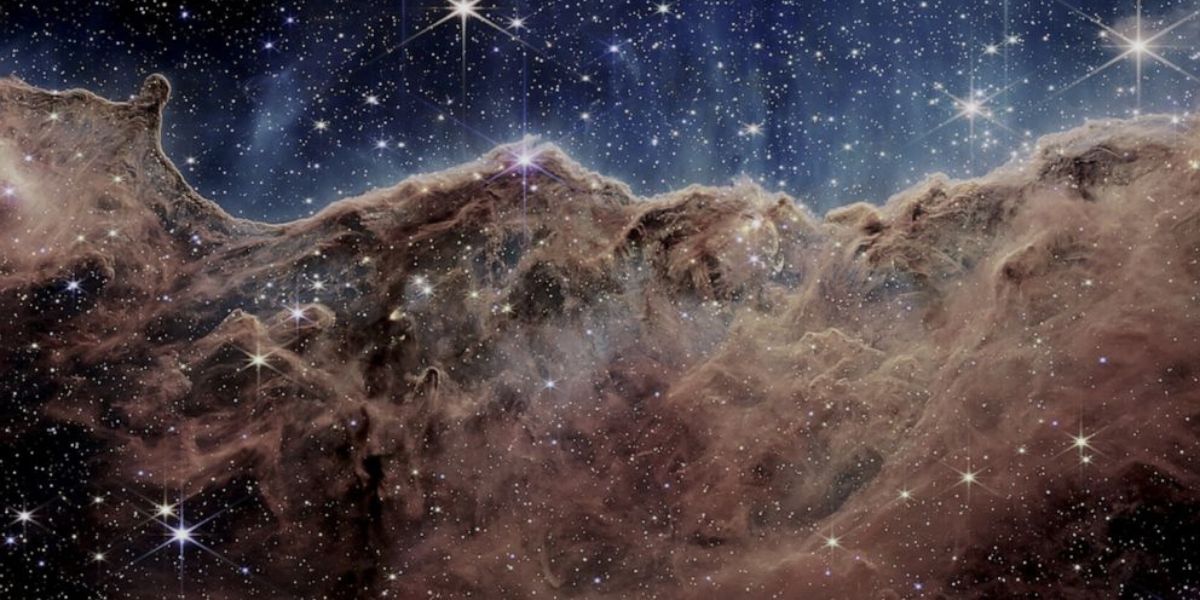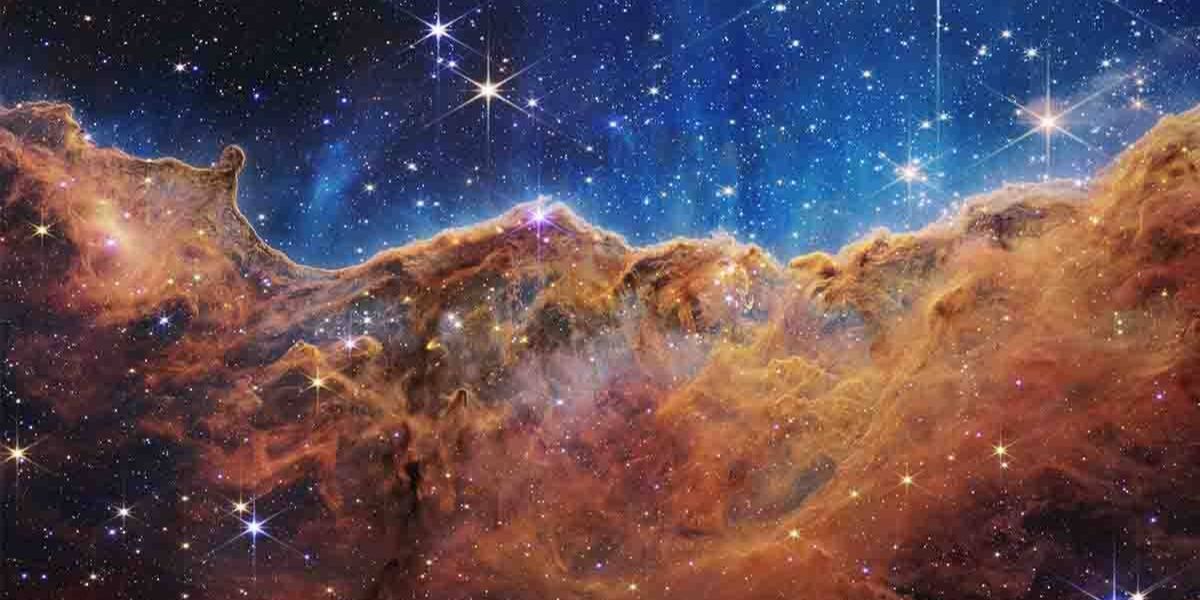In the ever-changing world of technology and retai...
news-extra-space

 Matt Russo, a musician and professor of physics at the University of Toronto, said, “Music goes to the heart of our emotions.” The report explained, “Our goal is to make Weber’s images and data accessible through sound, helping listeners create their own mental image.” Let’s know some of its details.
The Webb telescope captured a near-infrared image of the Carina Nebula’s Cosmic Cliffs, represented on the map as a symphony of sounds. The “Cosmic Cliff” is phoneticized or translated into audio. NASA’s Webb Telescope tweeted, “The blue gas and dust sound windy, while the melodic lines represent the rise and fall of “mountains.” A bigger tone means brighter light,”
NASA explained it in detail, “The soundtrack is vibrant and full, representing the details in this massive air cavity with the appearance of mountains. The gas and dust in the upper half of the image are represented in shades of blue and wind, similar to the sound of a drone. The lower half of the image is represented by a deep red of orange and red, with a sharper, more melodic composition. The brighter the light in the image, the louder. The vertical position of the light also determines the frequency of the sound.”
The colors in Webb’s two views of the Southern Ring Nebula form maps to pitch. The higher frequencies represent near-infrared light left, and the lower frequencies represent the mid-infrared. The mid-infrared plays audio of two central stars, and the near-infrared plays one sound.
The team of NASA scientists and musicians converted Webb’s images into sound. However, its atmospheric data regarding the gas giant planet WASP-96 b also changed into a sci-fi soundscape.
Matt Russo, a musician and professor of physics at the University of Toronto, said, “Music goes to the heart of our emotions.” The report explained, “Our goal is to make Weber’s images and data accessible through sound, helping listeners create their own mental image.” Let’s know some of its details.
The Webb telescope captured a near-infrared image of the Carina Nebula’s Cosmic Cliffs, represented on the map as a symphony of sounds. The “Cosmic Cliff” is phoneticized or translated into audio. NASA’s Webb Telescope tweeted, “The blue gas and dust sound windy, while the melodic lines represent the rise and fall of “mountains.” A bigger tone means brighter light,”
NASA explained it in detail, “The soundtrack is vibrant and full, representing the details in this massive air cavity with the appearance of mountains. The gas and dust in the upper half of the image are represented in shades of blue and wind, similar to the sound of a drone. The lower half of the image is represented by a deep red of orange and red, with a sharper, more melodic composition. The brighter the light in the image, the louder. The vertical position of the light also determines the frequency of the sound.”
The colors in Webb’s two views of the Southern Ring Nebula form maps to pitch. The higher frequencies represent near-infrared light left, and the lower frequencies represent the mid-infrared. The mid-infrared plays audio of two central stars, and the near-infrared plays one sound.
The team of NASA scientists and musicians converted Webb’s images into sound. However, its atmospheric data regarding the gas giant planet WASP-96 b also changed into a sci-fi soundscape.
Leave a Reply






